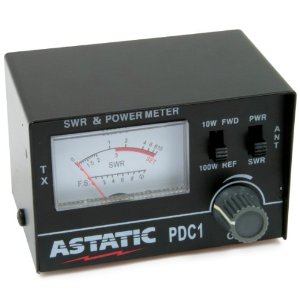What CB Radio range can you get?
One of the questions that often gets asked when talking
about cb radio is ‘what sort of range do you get?’ and to be honest it’s not a
straightforward answer.
CB Radio was developed over 40 years ago for short range
communications. It operates on a low
frequency and the legal limited for all FM CB radio is just 4 watts.
The other thing with CB Radio is it usually involves a big
long aerial on your vehicle or rigged up on a mast on the roof of your house.
It is also critical to tune your antenna to make sure the
maximum power from the radio can be transmitted.
As well as the amount of power you are able to output the
other critical aspect to what sort of range you are likely to achieve is your
location. More specifically your
relative height.
If you are down in a valley you won’t get as good a range as
if you are up on a hill.
Also if you are in a built up area surrounded by buildings
you won’t get as good a range as if you are in an open area like a park.
The other limiting factor is about the amount of power you can transmit at. All legal changes radios are limited to 4 watts. Since cb radio was developed for short range transmissions and is at a relatively frequency they are limited by the amount of power they can produce. This is also to help the risk of interference with other radio and television equipment which may be in the local area.
There are other types of radio equipment most noticeably SSB radios which can legally produce 12 Watts and hence have an increased range when compared to standard CB rigs.
With all radio transmissions we must consider aerials being in 'line of sight' to be able to communicate with each other. So the importance of getting up in to higher ground since this increases the amount of sky you can see relates to how many successful communications you are able to achieve.
The size and type of antenna used are also critical to the range of your signals. As well as how correctly tuned the aerial is. So the basic rule is the bigger the aerial the better the range you will achieve.
There are other conditions which also dramatically effect the range of signals you are able to send and receive. These are broadly known as skip conditions and are highly variable and there fore difficult to predict when you will start to receiving signals from a particular part of the world.
This really is the basic interest in all types of radio. The ambition to be able to send a readable signal in some remote distant part of the world.
So in real terms what types of range should you expect?
Handheld / Walkie Talkie
The Walkie Talkie although very portable would generally have a very small aerial and therefore have a much reduced range. Range would be effected by being inside a building or in a built up area and particularly from inside a car.
Up on high ground in open areas the expected range could be much further (+ 10 Miles)
Expected Range - (1 Mile - 3 Miles)
Mobile Aerial
Mobile aerials tend to be the preferred choice for many since as they are attached to a vehicle are highly transportable. Deliberately driving up to high ground in car without making any other changes to a standard mobile set up in a car can produce very good results.
Mobile aerials tend to be kept to a particular height to prevent issues when driving so although a reasonable size lack the overall size of a home base aerial.
Expected Range - (5 Miles - 15 Miles)
Homebase Ariel
These tend to be much larger than their mobile counterparts but require a sturdy location preferably at an elevated height to be truly effective. As these tend to be a more static set up the physical location of the aerial will play an important part in the range achieved by a Homebase aerial. Many CB Users add burners to a Homebase set up to improve the normal range of their aerial.
Expected Range - (5 Miles - 25 Miles)
Portable Aerials
For the guys who really take things to the extreme there is a favourite type of aerial for really long distance radio communication especially amongst those who love to get up on mountain tops with a portable set up.
The benefit of these types of portable aerials are that they usually can be homemade and therefore extremely cheap to produce, highly flexible and therefore extremely portable and can be packed away into very small spaces. The major part of these types of flexible aerials is the mast or poles which are needed to elevate them appropriately.
That said, for the guys who do venture up on to seriously high ground with portable rigs and battery packs, the rewards are high. In the right conditions ranges of over 100 miles are regularly recorded.







































